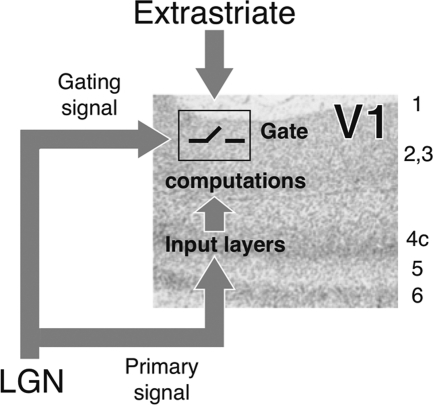Figure 8.
A model of V1 circuitry to explain task-dependent BOLD modulations in MD and RP subjects. Primary signals from the LGN project to the main input layers in V1. The LGN also sends a gating signal that governs the effectiveness of extrastriate signals. When there is very low retinal image contrast, the primary signal from the LGN is noise. The LGN gating signal prevents extrastriate feed-back from interacting with the noise transmitted to V1. When there is reliable retinal contrast, the primary signal is meaningful and the LGN gating signal allows extrastriate signals to pass through and interact. When a retinal region is dysfunctional, both the primary signal and the gating signal are absent. Without the gating signal, extrastriate signals can be transmitted into V1 even in the absence of a primary signal from the LGN. In this case, the extrastriate signals produced a BOLD response that was not present in controls.

